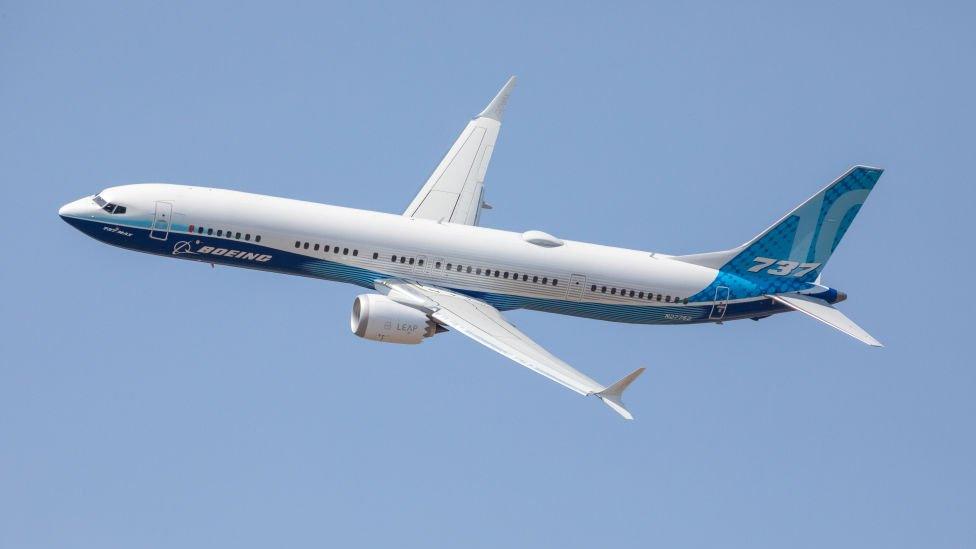Boeing to Lay Off Over 2,500 Workers Amid Restructuring: A Closer Look at the Aerospace Giant’s Challenges and Strategy
Boeing, one of the world’s leading aerospace manufacturers, announced its plan to lay off over 2,500 employees in the United States as part of a sweeping restructuring initiative. The layoffs, which will span engineering, manufacturing, and support roles, reflect the company’s ongoing struggle to adapt to a changing economic and industry landscape.
The decision underscores the pressures Boeing faces in maintaining its competitiveness while navigating supply chain disruptions, fluctuating market demand, and a broader shift in aerospace innovation. This article provides a comprehensive analysis of the factors leading to the layoffs, the implications for employees and the industry, and the strategic path forward for Boeing.

Boeing’s Financial and Operational Struggles
Boeing’s announcement comes after several years of compounding challenges. While the aerospace giant has long been a pillar of the U.S. economy, contributing billions to GDP and supporting hundreds of thousands of jobs, it has been increasingly weighed down by internal and external issues.
Post-737 MAX Crisis Recovery
The grounding of Boeing’s 737 MAX fleet in 2019 following two fatal crashes was a watershed moment. Despite the aircraft’s recertification and return to service, the fallout from the crisis has persisted. The company incurred billions in fines, compensation payouts to customers, and costs associated with fixing the flawed MCAS software.
Pandemic-Induced Decline
The COVID-19 pandemic exacerbated Boeing’s troubles. Global air travel demand plummeted, prompting airlines to defer or cancel aircraft orders. Boeing was forced to cut production rates for several key programs, including the 787 Dreamliner and the 737 MAX. While the industry has shown signs of recovery, the rebound has been uneven, with slower-than-expected order growth for wide-body jets.
Ongoing Supply Chain Issues
Global supply chain disruptions have further strained Boeing’s operations. Shortages of materials such as titanium, used in aircraft manufacturing, and delays in receiving critical components have hampered production timelines. The supply chain bottlenecks, coupled with rising raw material costs, have significantly impacted profitability.
Competitor Pressure
Boeing’s chief rival, Airbus, has capitalized on the American manufacturer’s struggles. The European aerospace firm has consistently outpaced Boeing in new orders, particularly for single-aisle aircraft, which remain the most lucrative segment in commercial aviation. Airbus’ A320neo has become the preferred choice for many airlines, eroding Boeing’s market share.

Details of the Layoffs
Boeing’s decision to cut over 2,500 jobs is part of a broader effort to streamline operations and reduce costs. The layoffs will affect employees across multiple U.S. facilities, including major hubs in Washington state, South Carolina, and Missouri.
- Engineering and Manufacturing Roles: The cuts will primarily impact engineers and assembly line workers involved in commercial aircraft production. These reductions are tied to declining production rates for certain models, as Boeing recalibrates output to align with current demand.
- Support Staff: Administrative roles, including human resources and procurement, will also see reductions as Boeing consolidates these functions to improve efficiency.
- Defense and Space Units: While the layoffs are concentrated in the commercial division, Boeing’s defense and space units are not immune. Some projects, particularly those with delayed government contracts, have seen scaled-back staffing.
The company stated that it plans to provide severance packages, career transition support, and opportunities to apply for other roles within Boeing where possible.
Impact on Employees and Communities
The layoffs will undoubtedly have a profound impact on Boeing’s workforce and the communities that rely on the company’s economic contributions.
Employee Concerns
Workers affected by the layoffs face uncertainty in an industry that has seen significant volatility in recent years. Skilled aerospace workers may struggle to find comparable opportunities, especially in regions where Boeing is a major employer.
Community Fallout
Cities like Everett, Washington, and Charleston, South Carolina, where Boeing operates large facilities, are bracing for the economic ripple effects. Local businesses that depend on Boeing employees, such as restaurants, retailers, and service providers, are likely to feel the pinch.
Union Responses
Labor unions representing Boeing workers have expressed concern about the scale of the cuts. The International Association of Machinists and Aerospace Workers (IAM) has called for greater transparency from Boeing and urged the company to prioritize job preservation over shareholder returns.

Broader Industry Implications
Boeing’s layoffs reflect broader challenges in the aerospace sector, where companies are grappling with post-pandemic recovery, decarbonization pressures, and shifting market dynamics.
Demand for New Aircraft
While air travel has rebounded in regions like North America and Asia, demand for new aircraft remains uneven. Airlines are cautious about committing to large orders, given concerns about economic uncertainty and the high costs of fleet renewal.
Shift Toward Sustainability
The aerospace industry is under growing pressure to reduce its carbon footprint. This has spurred investments in technologies like sustainable aviation fuel (SAF) and hydrogen-powered aircraft. However, the high costs associated with these innovations present a financial challenge for manufacturers like Boeing.
Workforce Transformation
The layoffs highlight the need for workforce transformation in aerospace. As the industry shifts toward more automated and digital manufacturing processes, companies must balance reducing headcounts with retaining the specialized skills needed for complex projects.

Boeing’s Strategic Path Forward
In a statement accompanying the layoff announcement, Boeing CEO David Calhoun emphasized that the workforce reductions are part of a larger strategy to ensure the company’s long-term stability and competitiveness.
Focus Areas for Recovery
- Operational Efficiency: Boeing is prioritizing cost-cutting measures and leaner production processes to address inefficiencies. This includes reconfiguring supply chains to reduce dependence on single-source suppliers.
- Investment in Innovation: The company has signaled a renewed focus on next-generation aircraft development, particularly in the realm of sustainable aviation. Boeing aims to regain its position as a leader in aerospace innovation by investing in technologies that align with the industry’s decarbonization goals.
- Expanding Defense and Space Portfolio: While the commercial division faces headwinds, Boeing is looking to expand its footprint in the defense and space sectors. Projects such as the Starliner spacecraft and advanced military aircraft programs are expected to play a larger role in the company’s revenue mix.
- Global Partnerships: Boeing is strengthening partnerships with international suppliers and customers to diversify its market reach. The company is particularly focused on growth opportunities in Asia, where air travel demand is expected to outpace other regions.
Conclusion
Boeing’s decision to lay off over 2,500 workers marks a critical juncture for the company as it seeks to recover from years of financial and operational setbacks. While the layoffs are a painful but necessary step toward achieving greater efficiency, they also underscore the profound challenges facing the aerospace industry.
As Boeing navigates this period of transition, its ability to innovate, adapt to market demands, and maintain workforce morale will be crucial in determining its future trajectory. For employees, communities, and the industry at large, the stakes are high as Boeing charts its path forward in a rapidly evolving landscape.









